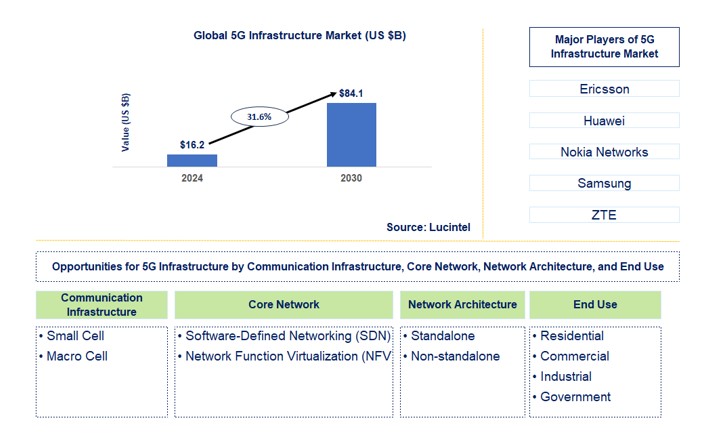
5G and SASE Reimagining WAN Infrastructure
5G and SASE reimagining WAN infrastructure: It sounds like something out of a sci-fi novel, right? But the reality is even more exciting. We’re talking about a complete overhaul of how businesses connect and secure their networks. Imagine lightning-fast speeds, rock-solid security, and a simplified management system all rolled into one. This isn’t just about faster downloads; it’s about unlocking entirely new levels of productivity and innovation.
Get ready to dive into the future of networking!
This post will explore how 5G’s blazing speed and low latency are changing the game for Wide Area Networks (WANs). We’ll examine the challenges of integrating this cutting-edge technology into existing systems and look at which industries are already seeing the biggest benefits. Then, we’ll delve into Secure Access Service Edge (SASE), the security superhero of the modern WAN, and how it keeps everything safe in this high-speed world.
Finally, we’ll uncover the best practices for making the switch, analyze the costs versus the rewards, and peek into what the future holds for 5G and SASE in WAN architecture.
5G’s Impact on WAN Infrastructure
The advent of 5G is fundamentally reshaping the landscape of Wide Area Networks (WANs). Its significantly increased speed and dramatically reduced latency are forcing a re-evaluation of existing WAN architectures and prompting the adoption of new technologies and strategies. This shift is not merely an incremental improvement; it’s a transformative change that unlocks opportunities across various industries.
5G and SASE are revolutionizing WAN infrastructure, offering unprecedented speed and security. This improved connectivity is fueling the need for rapid application development, and that’s where the power of domino app dev, the low-code and pro-code future , comes into play. By enabling faster development cycles, Domino apps leverage this enhanced WAN infrastructure to deliver truly innovative and responsive applications.
Ultimately, this synergy between advanced networking and agile development is key to unlocking the full potential of 5G and SASE.
5G’s Enhanced Speed and Low Latency Redefine WAN Requirements
G’s capabilities, boasting peak data rates exceeding 10 Gbps and latency as low as 1 millisecond, far surpass those of previous generations of cellular technology and even many traditional WAN technologies. This translates to a significant increase in bandwidth availability and a considerable reduction in the time it takes for data to travel across the network. This low latency is particularly crucial for applications requiring real-time responsiveness, such as remote surgery, autonomous vehicle control, and high-frequency trading.
Consequently, WAN infrastructure needs to be upgraded to accommodate these higher speeds and lower latencies, demanding new hardware, software, and network management approaches. Existing WAN architectures often struggle to handle the volume and speed of data generated by 5G-connected devices.
Challenges of Integrating 5G into Existing WAN Architectures
Integrating 5G into existing WAN architectures presents several significant challenges. Firstly, the sheer volume of data generated by 5G devices necessitates substantial upgrades to network capacity and bandwidth. Secondly, ensuring seamless interoperability between 5G networks and legacy systems requires careful planning and implementation. Thirdly, security concerns are amplified with the increased connectivity and data flow. Robust security measures are essential to protect against potential threats.
Finally, managing the complexity of a heterogeneous network environment, incorporating both 5G and traditional technologies, requires sophisticated network management tools and expertise. Migrating to a 5G-enabled WAN is not a simple switch but a comprehensive undertaking requiring careful planning and phased implementation.
Industries Benefiting Most from 5G-Enhanced WANs
Several industries stand to gain immensely from the capabilities of 5G-enhanced WANs. The manufacturing sector can leverage 5G for real-time monitoring of production processes, predictive maintenance, and automated control systems. Healthcare benefits from improved remote diagnostics, telemedicine, and the ability to connect and control sophisticated medical devices remotely. The transportation industry sees advancements in autonomous driving, improved traffic management, and real-time tracking of vehicles and goods.
Finally, the financial sector benefits from high-speed, low-latency connections for high-frequency trading and secure financial transactions. These are just a few examples of the transformative potential of 5G in diverse sectors.
Comparison of Traditional WAN Technologies with 5G-Enabled WANs
| Feature | Traditional WAN (e.g., MPLS, leased lines) | 5G-Enabled WAN |
|---|---|---|
| Speed | Relatively lower speeds, varying based on technology | Significantly higher speeds, up to 10 Gbps+ |
| Latency | Higher latency, often impacting real-time applications | Ultra-low latency, typically under 10ms |
| Cost | Can be expensive, especially for high bandwidth requirements | Potentially lower cost per unit of bandwidth in some scenarios |
| Scalability | Scaling can be complex and expensive | Generally more scalable due to the inherent nature of cellular networks |
SASE and its Role in the Modern WAN

The rise of 5G and the increasing reliance on cloud services have fundamentally reshaped the WAN landscape. Traditional security perimeters are dissolving, making a robust and adaptable security architecture crucial. Secure Access Service Edge (SASE) emerges as a vital solution, converging network and security functions to deliver secure access to applications and data regardless of location. This approach simplifies management and enhances security in the increasingly complex 5G-powered WAN.
Key Components of SASE
SASE is not a single product but an architectural approach. Its core components work together to provide comprehensive security and optimized network access. These key elements include Secure Web Gateway (SWG), Cloud Access Security Broker (CASB), Zero Trust Network Access (ZTNA), Firewall as a Service (FWaaS), and SD-WAN. The SWG filters web traffic, preventing access to malicious websites and content.
CASB monitors and controls access to cloud applications, ensuring data security and compliance. ZTNA provides secure access to internal applications, based on granular user and device verification. FWaaS offers advanced firewall capabilities delivered as a cloud service. Finally, SD-WAN orchestrates the network connectivity, optimizing performance and routing traffic efficiently. These components work together seamlessly, providing a unified and comprehensive security posture.
SASE Simplifies WAN Security Management in a 5G Environment
G’s inherent characteristics – high bandwidth, low latency, and ubiquitous coverage – introduce new security challenges. The increased number of devices and the mobile nature of 5G connections necessitate a more agile and scalable security approach. SASE addresses these challenges by centralizing security policy management. Instead of managing individual security tools at disparate locations, organizations can manage security policies from a single pane of glass, simplifying administration and reducing operational complexity.
This centralized approach also allows for consistent security policies across all users and devices, regardless of their location or network connection. Automated policy enforcement and threat detection capabilities further enhance efficiency and reduce the risk of human error.
Security Threats Mitigated by SASE in 5G-Powered WANs
The increased connectivity and mobility offered by 5G also expand the attack surface. SASE mitigates several key threats. For example, it protects against malware and phishing attacks through the integrated SWG. The CASB component safeguards against data breaches and unauthorized access to cloud applications. ZTNA prevents unauthorized access to internal resources, even if a device is compromised.
Furthermore, FWaaS protects against network-based attacks, while SD-WAN ensures optimal network performance and resilience, minimizing the impact of disruptions. By addressing these threats comprehensively, SASE significantly enhances the security posture of 5G-powered WANs.
Architecture of a SASE-Integrated 5G WAN
Imagine a diagram showing a simplified representation of a SASE-integrated 5G WAN. At the core is the SASE cloud platform, a central management point for all security policies and network orchestration. Various users and devices (laptops, smartphones, IoT devices) connect to the WAN through 5G networks. Their traffic is routed through the SASE cloud platform. The platform applies security policies (SWG, CASB, ZTNA, FWaaS) before forwarding the traffic to its destination – either cloud applications or internal resources.
The SD-WAN component within SASE dynamically routes traffic based on application requirements and network conditions, optimizing performance and ensuring high availability. The diagram clearly illustrates how all traffic flows through the SASE platform, receiving security inspection and policy enforcement before reaching its final destination, irrespective of the user’s location or device type. This central enforcement point simplifies security management and ensures consistent protection across the entire WAN.
Real-world examples include companies like Google Cloud and Microsoft Azure offering SASE capabilities as part of their broader cloud platforms. These providers handle the underlying infrastructure and security management, allowing businesses to focus on their core competencies.
Reimagining WAN Infrastructure with 5G and SASE
The convergence of 5G and Secure Access Service Edge (SASE) is revolutionizing Wide Area Network (WAN) infrastructure, offering unprecedented levels of agility, security, and performance. Traditional WAN architectures, often reliant on expensive and inflexible MPLS networks, are struggling to keep pace with the demands of today’s cloud-first, mobile workforce. 5G and SASE provide a compelling alternative, enabling businesses to connect users and devices securely and efficiently, regardless of location.
Comparison of Traditional MPLS WANs and 5G/SASE-based WANs
Traditional MPLS WANs are characterized by their dedicated, point-to-point connections, offering high bandwidth and predictable performance. However, they are expensive to deploy and maintain, inflexible to scale, and struggle to support the diverse range of devices and applications used in modern businesses. Deployment times are also lengthy. In contrast, 5G/SASE-based WANs leverage the inherent flexibility and scalability of 5G networks, coupled with the integrated security capabilities of SASE.
This approach allows for a more dynamic and cost-effective solution, with faster deployment and easier scaling to accommodate fluctuating demands. 5G’s inherent mobility also empowers remote and mobile workers with consistent, secure connectivity. The integrated security of SASE simplifies network management and improves security posture compared to the more complex and often siloed security solutions typically associated with MPLS.
Best Practices for Migrating from Legacy WANs to 5G/SASE Architectures, 5g and sase reimagining wan infrastructure
A phased migration approach is often the most effective strategy for transitioning from legacy WANs to 5G/SASE. This involves a careful assessment of current network infrastructure, identifying key applications and users, and prioritizing migration based on business needs and criticality. A pilot project on a smaller scale can help validate the 5G/SASE solution and identify potential challenges before a full-scale rollout.
Thorough planning and close collaboration between IT teams and business stakeholders are crucial for a smooth transition. Robust change management processes and adequate employee training are also essential to ensure a successful migration. Careful consideration should be given to integration with existing security systems and applications.
Step-by-Step Guide for Implementing a 5G/SASE WAN Solution
- Needs Assessment and Planning: Define business requirements, identify key users and applications, and assess current network infrastructure.
- Proof of Concept (POC): Conduct a pilot project to test the 5G/SASE solution in a controlled environment.
- Vendor Selection: Choose a vendor that offers a comprehensive 5G/SASE solution that aligns with business requirements.
- Network Design and Deployment: Design the 5G/SASE network architecture and deploy the necessary infrastructure.
- Integration and Testing: Integrate the 5G/SASE solution with existing systems and applications and conduct thorough testing.
- Migration and Rollout: Migrate users and applications to the 5G/SASE network in a phased approach.
- Monitoring and Optimization: Continuously monitor network performance and optimize the solution as needed.
Cost-Benefit Analysis of Adopting a 5G/SASE WAN Infrastructure
Adopting a 5G/SASE WAN infrastructure offers significant cost and performance advantages, although initial investment may be substantial. Here’s a breakdown:
- Reduced Operational Costs: Simplified network management, reduced need for on-premise equipment, and automated security updates can significantly lower operational expenses over time. For example, a large multinational corporation might see a 20% reduction in WAN management costs within two years.
- Improved Security Posture: Integrated security features provided by SASE eliminate the need for multiple point solutions, reducing complexity and improving overall security. This translates to fewer security breaches and reduced associated costs.
- Enhanced Agility and Scalability: 5G’s flexibility allows businesses to easily scale their network to meet changing demands, avoiding costly overprovisioning of resources. A rapidly growing company can adapt its network infrastructure to support new locations and users without significant delays or expenses.
- Increased Productivity: Improved network performance and seamless connectivity for remote and mobile workers can lead to significant productivity gains. For instance, a company with a large field workforce might see a 15% increase in employee productivity due to reliable and secure remote access.
- Faster Deployment: 5G/SASE solutions often have faster deployment times compared to traditional MPLS networks, allowing businesses to quickly connect new locations and users. A new retail branch could be connected to the corporate network within days instead of weeks.
5G and SASE Use Cases: 5g And Sase Reimagining Wan Infrastructure

The convergence of 5G and Secure Access Service Edge (SASE) is revolutionizing WAN infrastructure, offering significant improvements in performance, security, and scalability across various sectors. Real-world deployments are showcasing the tangible benefits of this integrated approach, leading to enhanced user experiences and streamlined operations. Let’s explore some key use cases.
5G and SASE in Healthcare
Hospitals and telehealth providers are leveraging 5G and SASE to improve remote patient monitoring, telemedicine consultations, and the secure transfer of sensitive patient data. High-bandwidth, low-latency 5G networks enable real-time transmission of high-resolution medical images and video, facilitating faster diagnosis and treatment. SASE ensures secure access to these critical systems from anywhere, protecting patient privacy and complying with stringent healthcare regulations like HIPAA.
For example, a remote surgery using robotic arms can be facilitated with the low latency of 5G and the security provided by SASE, enabling precise control and data protection. This reduces the need for physical presence and improves accessibility for patients in remote areas.
5G and SASE in Finance
The financial sector benefits from 5G and SASE through improved mobile banking experiences, enhanced security for financial transactions, and optimized performance for high-frequency trading. 5G’s speed and reliability ensure seamless mobile access to banking applications, while SASE’s integrated security features protect against cyber threats and data breaches. High-frequency trading firms utilize 5G’s low latency to execute trades faster and more efficiently, gaining a competitive edge in the market.
For instance, a bank’s mobile app, enhanced by 5G and SASE, can offer faster transaction processing, biometrics-based authentication, and secure access to account information from anywhere with a strong security posture.
5G and SASE in Manufacturing
Smart factories are increasingly relying on 5G and SASE to connect and manage industrial IoT (IIoT) devices, automate processes, and improve operational efficiency. 5G’s high bandwidth supports the real-time data transfer required for monitoring and controlling equipment, while SASE ensures the security of these critical industrial networks. The integration of 5G and SASE allows for remote monitoring and control of manufacturing processes, predictive maintenance, and improved supply chain management.
Imagine a scenario where sensors on a factory floor are connected via 5G, sending data to the cloud through a SASE-secured network. This allows for predictive maintenance alerts, preventing downtime and optimizing production.
Summary of Use Cases and Benefits
| Sector | Use Case | 5G Enhancement | SASE Enhancement |
|---|---|---|---|
| Healthcare | Remote patient monitoring, telemedicine | High-bandwidth, low-latency video and data transmission | Secure access to sensitive patient data, HIPAA compliance |
| Finance | Mobile banking, high-frequency trading | Fast and reliable mobile access, low-latency trading | Protection against cyber threats, secure financial transactions |
| Manufacturing | IIoT connectivity, automation | Real-time data transfer for equipment monitoring and control | Secure industrial networks, improved operational efficiency |
Future Trends in 5G and SASE-Enabled WANs
The convergence of 5G and SASE is revolutionizing WAN infrastructure, paving the way for a more agile, secure, and efficient network. But the journey doesn’t end here. Future advancements promise even greater capabilities, driven by emerging technologies and innovative applications. This section explores the key trends shaping the future of 5G and SASE-enabled WANs.
The next generation of WANs will be defined by their ability to adapt and evolve in response to ever-changing business needs and technological advancements. This requires a flexible, scalable, and intelligent infrastructure capable of leveraging the latest innovations.
Edge Computing’s Expanding Role
Edge computing, processing data closer to its source, is a perfect complement to 5G and SASE. 5G’s low latency and high bandwidth capabilities provide the ideal transport for edge applications, while SASE ensures secure access and consistent policy enforcement regardless of location. This combination enables real-time processing of data for applications like IoT device management, augmented reality, and autonomous vehicles, drastically reducing latency and improving overall performance.
Imagine a smart city scenario where traffic lights adjust in real-time based on immediate traffic flow analysis processed at the edge, all secured by SASE policies. This eliminates the need for constant communication with a central data center, leading to a more responsive and efficient system.
AI and Machine Learning for Optimization
AI and machine learning (ML) will play a crucial role in optimizing 5G/SASE WAN performance. These technologies can analyze vast amounts of network data to identify bottlenecks, predict failures, and automatically adjust network configurations for optimal performance. For example, ML algorithms can learn traffic patterns to proactively scale network resources, ensuring consistent performance even during peak demand. Predictive maintenance based on AI analysis of network equipment can minimize downtime and improve overall reliability.
This proactive approach shifts from reactive problem-solving to predictive optimization, improving efficiency and reducing operational costs.
Emerging Technologies Enhancing 5G and SASE
Several emerging technologies will further enhance 5G and SASE capabilities. These include:
- Network Slicing: Allows for the creation of virtual networks tailored to specific applications, optimizing resource allocation and performance. For example, a dedicated slice for high-bandwidth video streaming can coexist with a slice for low-latency industrial control applications, all within the same 5G network.
- Private 5G Networks: Offer organizations greater control and security over their network infrastructure, particularly beneficial for industries with stringent security requirements like finance or healthcare. A private 5G network, secured by SASE, can provide a highly reliable and secure environment for sensitive data processing.
- Advanced Security Technologies: Such as zero trust network access (ZTNA) and AI-powered threat detection, will further enhance SASE’s security capabilities, providing comprehensive protection against increasingly sophisticated cyber threats. ZTNA, for example, ensures that only authorized devices and users can access specific resources, regardless of their location.
Predictions for the Future Evolution of 5G and SASE in WAN Architecture
The future of 5G and SASE-enabled WANs is bright, with several key predictions shaping the landscape:
- Increased adoption of edge computing: More organizations will leverage edge computing to process data closer to the source, reducing latency and improving application performance.
- Wider deployment of private 5G networks: Driven by the need for greater control and security, private 5G networks will become increasingly prevalent in various industries.
- Greater integration of AI and ML: These technologies will play a more significant role in optimizing network performance, automating tasks, and enhancing security.
- Enhanced security capabilities: SASE will evolve to incorporate advanced security technologies, providing comprehensive protection against evolving cyber threats. We can expect to see a significant increase in the use of AI-driven security solutions that can adapt to new threats in real-time.
- More seamless integration with other technologies: 5G and SASE will integrate more seamlessly with other technologies such as IoT, cloud computing, and blockchain, creating a more interconnected and intelligent network infrastructure.
Closing Notes
The convergence of 5G and SASE is revolutionizing WAN infrastructure, offering unprecedented speed, security, and simplicity. While challenges exist in migrating from legacy systems, the long-term benefits – improved performance, enhanced security, and reduced operational costs – make this transition a strategic imperative for businesses seeking a competitive edge. The future of WANs is here, and it’s faster, smarter, and more secure than ever before.
Ready to embrace the change?
Clarifying Questions
What are the main security risks mitigated by SASE in a 5G environment?
SASE mitigates risks like data breaches, unauthorized access, and malware infections by integrating security functions like SWG, CASB, and FWaaS directly into the network edge, regardless of location.
How does 5G impact the cost of WAN infrastructure?
Initially, 5G implementation might involve higher upfront costs. However, long-term cost savings can be achieved through simplified management, reduced reliance on MPLS, and improved efficiency.
Is a complete migration to 5G and SASE necessary, or can it be a phased approach?
A phased approach is often more practical and cost-effective. Start with a pilot program to test and refine the solution before a full-scale deployment.
What are some common challenges encountered during the migration to a 5G/SASE WAN?
Challenges include integrating 5G with existing systems, ensuring seamless security policy enforcement, and managing the complexity of a new architecture. Careful planning and a phased approach are key.




